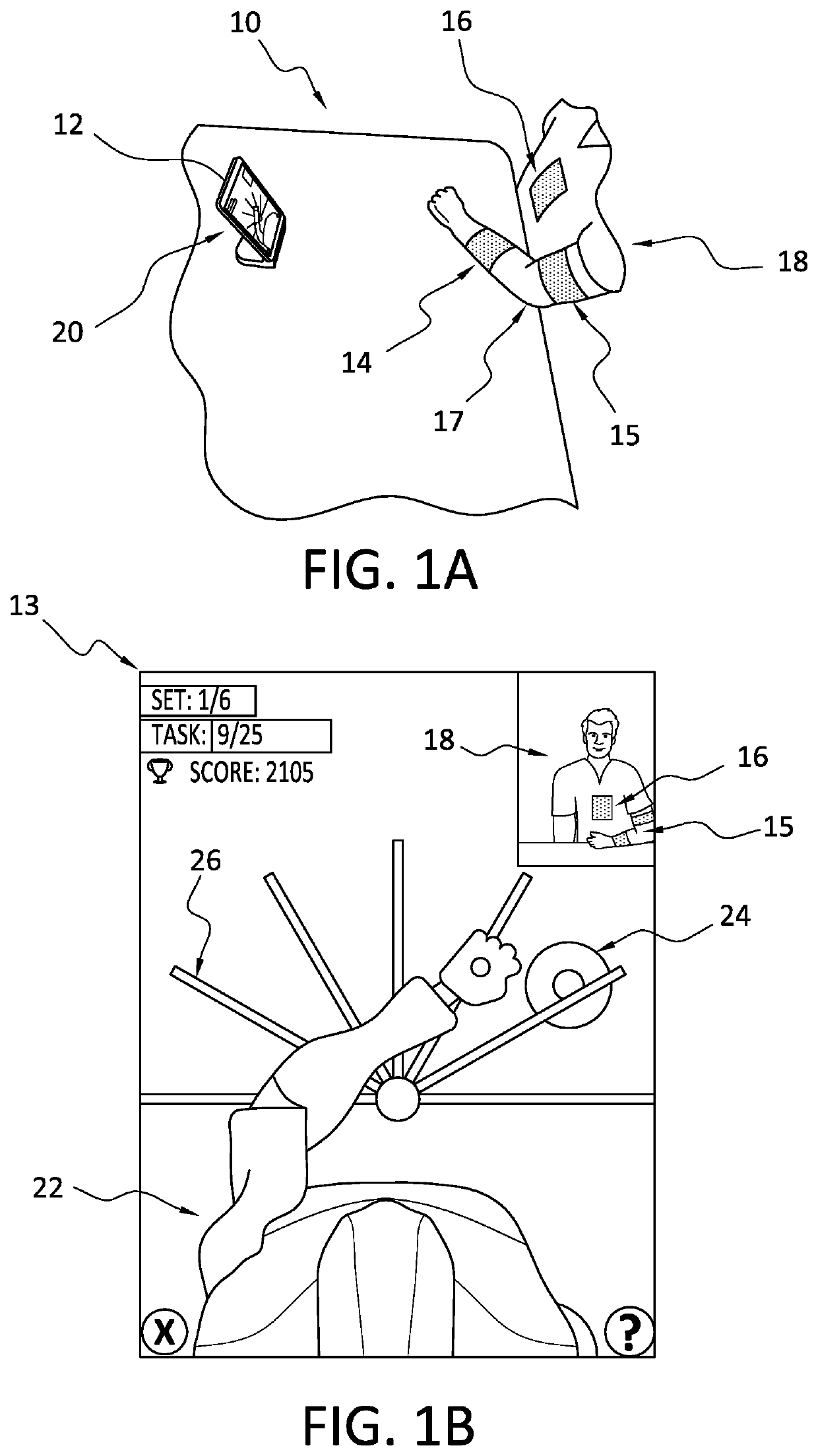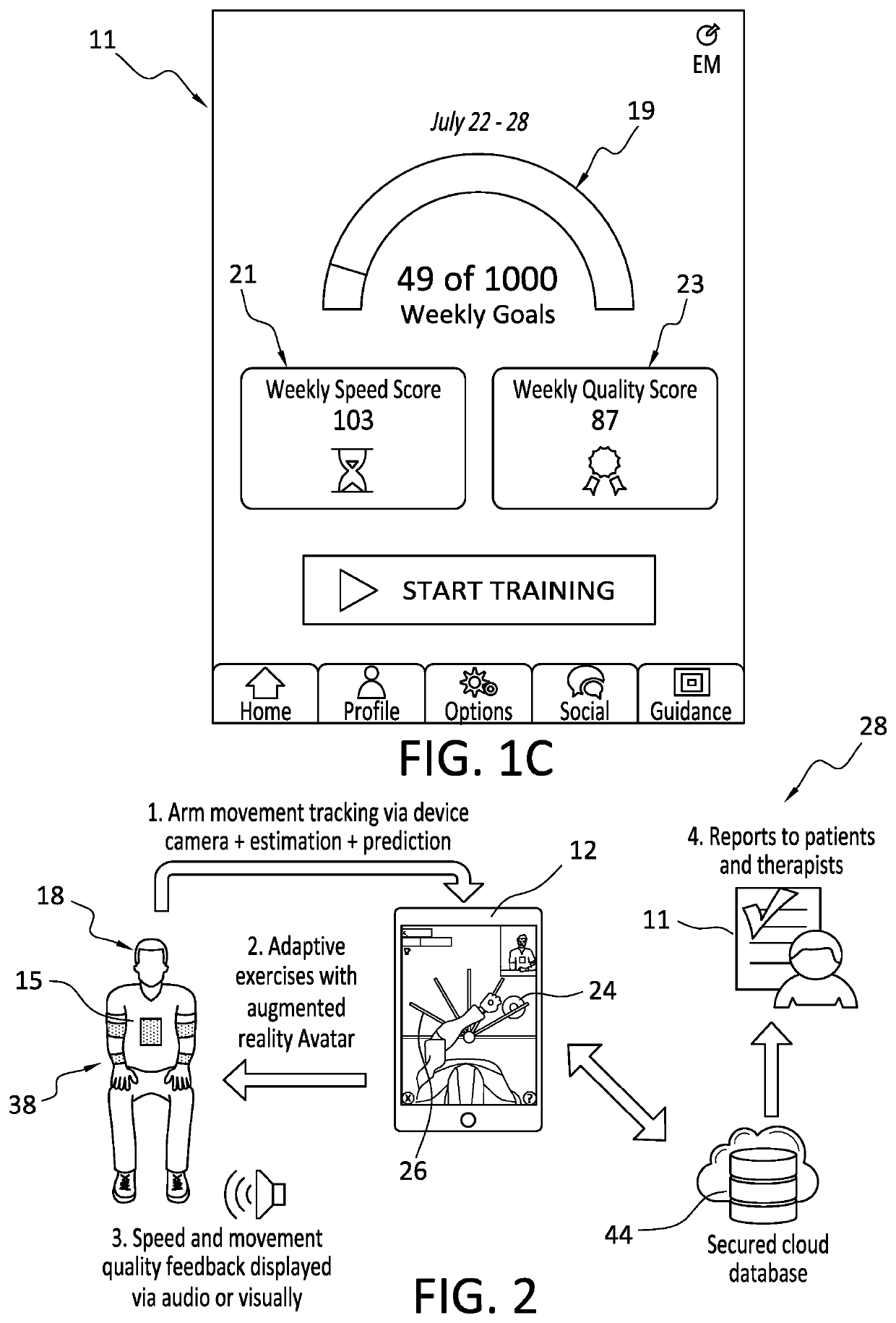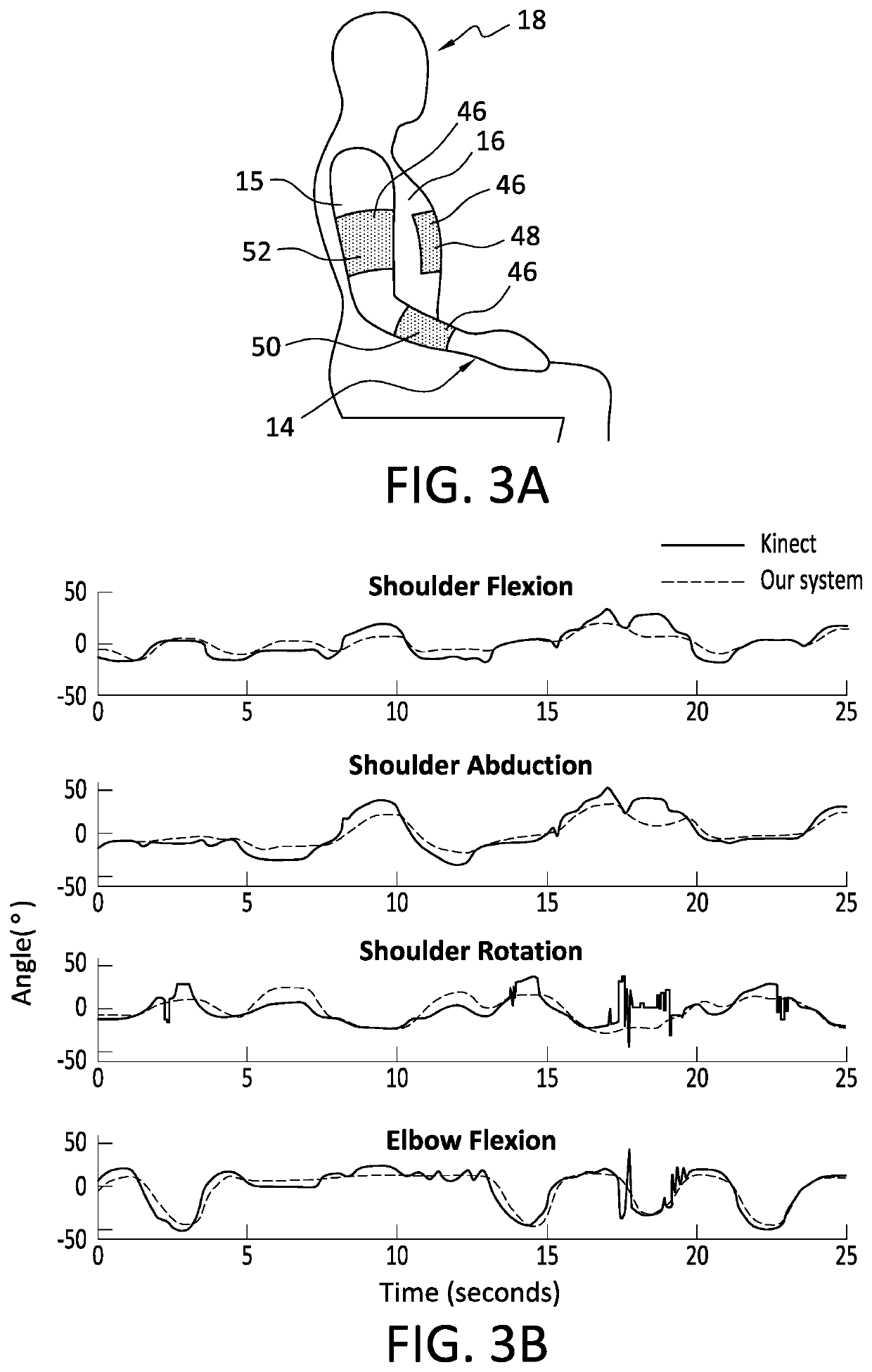Method and system for motion measurement and rehabilitation
a technology of motion measurement and rehabilitation, applied in the field of rehabilitation of patients, can solve the problems of patients having a hard time following through with homework, notably having difficulty in staying engaged to perform high number of repetitions, and a major problem in complian
- Summary
- Abstract
- Description
- Claims
- Application Information
AI Technical Summary
Benefits of technology
Problems solved by technology
Method used
Image
Examples
Embodiment Construction
[0032]Referring now to the drawings and the characters of reference marked thereon, FIG. 1A illustrates a preferred embodiment of the system for measuring motion of a user's body part for motor rehabilitation after impairment, in accordance with the principles of the present invention, designated generally as 10. A two-dimensional optical acquisition system, typically a two-dimensional camera 12, is utilized for detecting three-dimensional motions of a user's body part(s), (e.g. the lower arm 14, the middle upper body (or the trunk) 16, the upper arm 15, and the elbow 17) for motor rehabilitation after impairment. In this illustration, the patient 18 is seated at a table, facing a mobile device 20 (phone or tablet), which is positioned vertically on the table about one meter away. The camera 12, typically the front camera 12 of the device, is viewing the patient's upper body. FIG. 1B illustrates an example of a screen display 13 seen by the patient 18 during motor rehabilitation tra...
PUM
 Login to View More
Login to View More Abstract
Description
Claims
Application Information
 Login to View More
Login to View More - R&D
- Intellectual Property
- Life Sciences
- Materials
- Tech Scout
- Unparalleled Data Quality
- Higher Quality Content
- 60% Fewer Hallucinations
Browse by: Latest US Patents, China's latest patents, Technical Efficacy Thesaurus, Application Domain, Technology Topic, Popular Technical Reports.
© 2025 PatSnap. All rights reserved.Legal|Privacy policy|Modern Slavery Act Transparency Statement|Sitemap|About US| Contact US: help@patsnap.com



